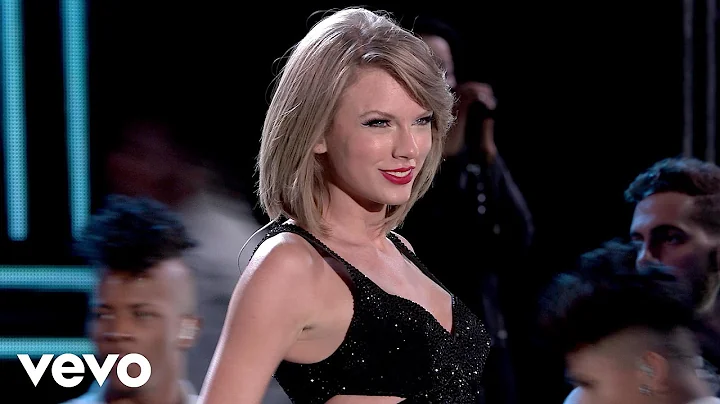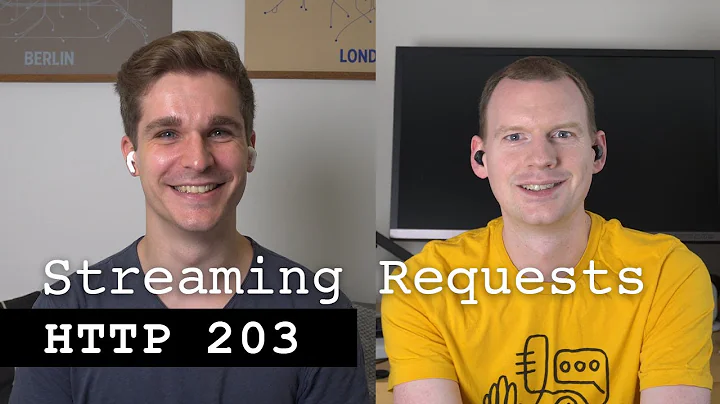Best approach to real time http streaming to HTML5 video client
Solution 1
EDIT 3: As of IOS 10, HLS will support fragmented mp4 files. The answer now, is to create fragmented mp4 assets, with a DASH and HLS manifest. > Pretend flash, iOS9 and below and IE 10 and below don't exist.
Everything below this line is out of date. Keeping it here for posterity.
EDIT 2: As people in the comments are pointing out, things change. Almost all browsers will support AVC/AAC codecs. iOS still requires HLS. But via adaptors like hls.js you can play HLS in MSE. The new answer is HLS+hls.js if you need iOS. or just Fragmented MP4 (i.e. DASH) if you don't
There are many reasons why video and, specifically, live video is very difficult. (Please note that the original question specified that HTML5 video is a requirement, but the asker stated Flash is possible in the comments. So immediately, this question is misleading)
First I will restate: THERE IS NO OFFICIAL SUPPORT FOR LIVE STREAMING OVER HTML5. There are hacks, but your mileage may vary.
EDIT: since I wrote this answer Media Source Extensions have matured, and are now very close to becoming a viable option. They are supported on most major browsers. IOS continues to be a hold out.
Next, you need to understand that Video on demand (VOD) and live video are very different. Yes, they are both video, but the problems are different, hence the formats are different. For example, if the clock in your computer runs 1% faster than it should, you will not notice on a VOD. With live video, you will be trying to play video before it happens. If you want to join a a live video stream in progress, you need the data necessary to initialize the decoder, so it must be repeated in the stream, or sent out of band. With VOD, you can read the beginning of the file them seek to whatever point you wish.
Now let's dig in a bit.
Platforms:
- iOS
- PC
- Mac
- Android
Codecs:
- vp8/9
- h.264
- thora (vp3)
Common Delivery methods for live video in browsers:
- DASH (HTTP)
- HLS (HTTP)
- flash (RTMP)
- flash (HDS)
Common Delivery methods for VOD in browsers:
- DASH (HTTP Streaming)
- HLS (HTTP Streaming)
- flash (RTMP)
- flash (HTTP Streaming)
- MP4 (HTTP pseudo streaming)
- I'm not going to talk about MKV and OOG because I do not know them very well.
html5 video tag:
- MP4
- webm
- ogg
Lets look at which browsers support what formats
Safari:
- HLS (iOS and mac only)
- h.264
- MP4
Firefox
- DASH (via MSE but no h.264)
- h.264 via Flash only!
- VP9
- MP4
- OGG
- Webm
IE
- Flash
- DASH (via MSE IE 11+ only)
- h.264
- MP4
Chrome
- Flash
- DASH (via MSE)
- h.264
- VP9
- MP4
- webm
- ogg
MP4 cannot be used for live video (NOTE: DASH is a superset of MP4, so don't get confused with that). MP4 is broken into two pieces: moov and mdat. mdat contains the raw audio video data. But it is not indexed, so without the moov, it is useless. The moov contains an index of all data in the mdat. But due to its format, it can not be 'flattened' until the timestamps and size of EVERY frame is known. It may be possible to construct an moov that 'fibs' the frame sizes, but is is very wasteful bandwidth wise.
So if you want to deliver everywhere, we need to find the least common denominator. You will see there is no LCD here without resorting to flash example:
- iOS only supports h.264 video. and it only supports HLS for live.
- Firefox does not support h.264 at all, unless you use flash
- Flash does not work in iOS
The closest thing to an LCD is using HLS to get your iOS users, and flash for everyone else. My personal favorite is to encode HLS, then use flash to play HLS for everyone else. You can play HLS in flash via JW player 6, (or write your own HLS to FLV in AS3 like I did)
Soon, the most common way to do this will be HLS on iOS/Mac and DASH via MSE everywhere else (This is what Netflix will be doing soon). But we are still waiting for everyone to upgrade their browsers. You will also likely need a separate DASH/VP9 for Firefox (I know about open264; it sucks. It can't do video in main or high profile. So it is currently useless).
Solution 2
Thanks everyone especially szatmary as this is a complex question and has many layers to it, all which have to be working before you can stream live video. To clarify my original question and HTML5 video use vs flash - my use case has a strong preference for HTML5 because it is generic, easy to implement on the client and the future. Flash is a distant second best so lets stick with HTML5 for this question.
I learnt a lot through this exercise and agree live streaming is much harder than VOD (which works well with HTML5 video). But I did get this to work satisfactorily for my use case and the solution worked out to be very simple, after chasing down more complex options like MSE, flash, elaborate buffering schemes in Node. The problem was that FFMPEG was corrupting the fragmented MP4 and I had to tune the FFMPEG parameters, and the standard node stream pipe redirection over http that I used originally was all that was needed.
In MP4 there is a 'fragmentation' option that breaks the mp4 into much smaller fragments which has its own index and makes the mp4 live streaming option viable. But not possible to seek back into the stream (OK for my use case), and later versions of FFMPEG support fragmentation.
Note timing can be a problem, and with my solution I have a lag of between 2 and 6 seconds caused by a combination of the remuxing (effectively FFMPEG has to receive the live stream, remux it then send it to node for serving over HTTP). Not much can be done about this, however in Chrome the video does try to catch up as much as it can which makes the video a bit jumpy but more current than IE11 (my preferred client).
Rather than explaining how the code works in this post, check out the GIST with comments (the client code isn't included, it is a standard HTML5 video tag with the node http server address). GIST is here: https://gist.github.com/deandob/9240090
I have not been able to find similar examples of this use case, so I hope the above explanation and code helps others, especially as I have learnt so much from this site and still consider myself a beginner!
Although this is the answer to my specific question, I have selected szatmary's answer as the accepted one as it is the most comprehensive.
Solution 3
Take a look at JSMPEG project. There is a great idea implemented there — to decode MPEG in the browser using JavaScript. Bytes from encoder (FFMPEG, for example) can be transfered to browser using WebSockets or Flash, for example. If community will catch up, I think, it will be the best HTML5 live video streaming solution for now.
Solution 4
One way to live-stream a RTSP-based webcam to a HTML5 client (involves re-encoding, so expect quality loss and needs some CPU-power):
- Set up an icecast server (could be on the same machine you web server is on or on the machine that receives the RTSP-stream from the cam)
-
On the machine receiving the stream from the camera, don't use FFMPEG but gstreamer. It is able to receive and decode the RTSP-stream, re-encode it and stream it to the icecast server. Example pipeline (only video, no audio):
gst-launch-1.0 rtspsrc location=rtsp://192.168.1.234:554 user-id=admin user-pw=123456 ! rtph264depay ! avdec_h264 ! vp8enc threads=2 deadline=10000 ! webmmux streamable=true ! shout2send password=pass ip=<IP_OF_ICECAST_SERVER> port=12000 mount=cam.webm
=> You can then use the <video> tag with the URL of the icecast-stream (http://127.0.0.1:12000/cam.webm) and it will work in every browser and device that supports webm
Solution 5
I wrote an HTML5 video player around broadway h264 codec (emscripten) that can play live (no delay) h264 video on all browsers (desktop, iOS, ...).
Video stream is sent through websocket to the client, decoded frame per frame and displayed in a canva (using webgl for acceleration)
Check out https://github.com/131/h264-live-player on github.
Related videos on Youtube
deandob
Updated on July 08, 2022Comments
-
deandob almost 2 years
I'm really stuck trying to understand the best way to stream real time output of ffmpeg to a HTML5 client using node.js, as there are a number of variables at play and I don't have a lot of experience in this space, having spent many hours trying different combinations.
My use case is:
1) IP video camera RTSP H.264 stream is picked up by FFMPEG and remuxed into a mp4 container using the following FFMPEG settings in node, output to STDOUT. This is only run on the initial client connection, so that partial content requests don't try to spawn FFMPEG again.
liveFFMPEG = child_process.spawn("ffmpeg", [ "-i", "rtsp://admin:[email protected]:554" , "-vcodec", "copy", "-f", "mp4", "-reset_timestamps", "1", "-movflags", "frag_keyframe+empty_moov", "-" // output to stdout ], {detached: false});2) I use the node http server to capture the STDOUT and stream that back to the client upon a client request. When the client first connects I spawn the above FFMPEG command line then pipe the STDOUT stream to the HTTP response.
liveFFMPEG.stdout.pipe(resp);I have also used the stream event to write the FFMPEG data to the HTTP response but makes no difference
xliveFFMPEG.stdout.on("data",function(data) { resp.write(data); }I use the following HTTP header (which is also used and working when streaming pre-recorded files)
var total = 999999999 // fake a large file var partialstart = 0 var partialend = total - 1 if (range !== undefined) { var parts = range.replace(/bytes=/, "").split("-"); var partialstart = parts[0]; var partialend = parts[1]; } var start = parseInt(partialstart, 10); var end = partialend ? parseInt(partialend, 10) : total; // fake a large file if no range reques var chunksize = (end-start)+1; resp.writeHead(206, { 'Transfer-Encoding': 'chunked' , 'Content-Type': 'video/mp4' , 'Content-Length': chunksize // large size to fake a file , 'Accept-Ranges': 'bytes ' + start + "-" + end + "/" + total });3) The client has to use HTML5 video tags.
I have no problems with streaming playback (using fs.createReadStream with 206 HTTP partial content) to the HTML5 client a video file previously recorded with the above FFMPEG command line (but saved to a file instead of STDOUT), so I know the FFMPEG stream is correct, and I can even correctly see the video live streaming in VLC when connecting to the HTTP node server.
However trying to stream live from FFMPEG via node HTTP seems to be a lot harder as the client will display one frame then stop. I suspect the problem is that I am not setting up the HTTP connection to be compatible with the HTML5 video client. I have tried a variety of things like using HTTP 206 (partial content) and 200 responses, putting the data into a buffer then streaming with no luck, so I need to go back to first principles to ensure I'm setting this up the right way.
Here is my understanding of how this should work, please correct me if I'm wrong:
1) FFMPEG should be setup to fragment the output and use an empty moov (FFMPEG frag_keyframe and empty_moov mov flags). This means the client does not use the moov atom which is typically at the end of the file which isn't relevant when streaming (no end of file), but means no seeking possible which is fine for my use case.
2) Even though I use MP4 fragments and empty MOOV, I still have to use HTTP partial content, as the HTML5 player will wait until the entire stream is downloaded before playing, which with a live stream never ends so is unworkable.
3) I don't understand why piping the STDOUT stream to the HTTP response doesn't work when streaming live yet if I save to a file I can stream this file easily to HTML5 clients using similar code. Maybe it's a timing issue as it takes a second for the FFMPEG spawn to start, connect to the IP camera and send chunks to node, and the node data events are irregular as well. However the bytestream should be exactly the same as saving to a file, and HTTP should be able to cater for delays.
4) When checking the network log from the HTTP client when streaming a MP4 file created by FFMPEG from the camera, I see there are 3 client requests: A general GET request for the video, which the HTTP server returns about 40Kb, then a partial content request with a byte range for the last 10K of the file, then a final request for the bits in the middle not loaded. Maybe the HTML5 client once it receives the first response is asking for the last part of the file to load the MP4 MOOV atom? If this is the case it won't work for streaming as there is no MOOV file and no end of the file.
5) When checking the network log when trying to stream live, I get an aborted initial request with only about 200 bytes received, then a re-request again aborted with 200 bytes and a third request which is only 2K long. I don't understand why the HTML5 client would abort the request as the bytestream is exactly the same as I can successfully use when streaming from a recorded file. It also seems node isn't sending the rest of the FFMPEG stream to the client, yet I can see the FFMPEG data in the .on event routine so it is getting to the FFMPEG node HTTP server.
6) Although I think piping the STDOUT stream to the HTTP response buffer should work, do I have to build an intermediate buffer and stream that will allow the HTTP partial content client requests to properly work like it does when it (successfully) reads a file? I think this is the main reason for my problems however I'm not exactly sure in Node how to best set that up. And I don't know how to handle a client request for the data at the end of the file as there is no end of file.
7) Am I on the wrong track with trying to handle 206 partial content requests, and should this work with normal 200 HTTP responses? HTTP 200 responses works fine for VLC so I suspect the HTML5 video client will only work with partial content requests?
As I'm still learning this stuff its difficult to work through the various layers of this problem (FFMPEG, node, streaming, HTTP, HTML5 video) so any pointers will be greatly appreciated. I have spent hours researching on this site and the net, and I have not come across anyone who has been able to do real time streaming in node but I can't be the first, and I think this should be able to work (somehow!).
-
 tsturzl about 10 yearsThis a tricky subject. First thing's first. Did you set your
tsturzl about 10 yearsThis a tricky subject. First thing's first. Did you set yourContent-Typein your head? Are you using chunk encoding? That's where I'd start. Also, HTML5 doesn't necessarily provide the functionality to stream, you can read more on that here. You'll most likely need to implement a way to buffer and play the video stream using your own means(see here), thought this is likely not well supported. Also google into MediaSource API. -
deandob about 10 yearsThanks for the reply. Yes, content-type is 'video/mp4' and this code works for streaming video files. Unfortunately MediaSource is chrome only, I have to support other browsers. Is there a spec on how the HTML5 video client interacts with a HTTP streaming server? I'm sure what I want to can be done, just not sure exactly how (with node.js but could use C# or C++ if its easier)
-
 tsturzl about 10 yearsProblem is not on your backend. You're streaming video just fine. The problem is in your frontend/client, you need to implement streaming yourself. HTML5 simply does not handle streams. You'll need to explore options per browser most likely. Reading into the w3 standards for the video tag and media APIs would be a good place to start.
tsturzl about 10 yearsProblem is not on your backend. You're streaming video just fine. The problem is in your frontend/client, you need to implement streaming yourself. HTML5 simply does not handle streams. You'll need to explore options per browser most likely. Reading into the w3 standards for the video tag and media APIs would be a good place to start. -
 jwriteclub about 10 yearsIt seems that it ought to be possible to make this work. I'm not offering a definitive answer, but I suspect that this problem relates to the fact that the browser is expecting the remainder of the mp4 container header / atoms at the beginning and not the next frame in the video stream. If you send a MOOV atom for a very long video (so that the player keeps requesting) as well as the other expected headers and then start copying out from ffmpeg this might work. You would also have to hide the scrub bar using js in the browser so they cannot scan forward.
jwriteclub about 10 yearsIt seems that it ought to be possible to make this work. I'm not offering a definitive answer, but I suspect that this problem relates to the fact that the browser is expecting the remainder of the mp4 container header / atoms at the beginning and not the next frame in the video stream. If you send a MOOV atom for a very long video (so that the player keeps requesting) as well as the other expected headers and then start copying out from ffmpeg this might work. You would also have to hide the scrub bar using js in the browser so they cannot scan forward. -
Alex Cohn about 10 yearsI would suggest to consider WebRTC which is gaining better cross-browser support from day to day.
-
Hamed over 8 yearsI suggest to ask this question in StackOverflow for Multimedia Systems
-
Rob Evans about 8 years@AlexCohn Can you stream video using WebRTC from a Node.js server to a client? I didn't think there were any WebRTC implementations available for Node.js.
-
Alex Cohn about 8 years@RobEvans: While I personally never had a need to blend these two technologies, I trust @Tsahi Levent-Levi's article that claims (3 years ago!) that this is pretty easy. Don't miss the comments after the article: you can find ready-to-fork projects on GitHub or Bitbucket.
-
-
 tsturzl about 10 yearsThere are
tsturzl about 10 yearsThere aresolutionsbut there is notsupportfor live streaming. This is directly refering to my comment seen above. And webm is supported on major browsers, mostly the latest stable version. -
deandob about 10 yearsI'd really prefer not to transcode from H.264 to webm and it shouldn't be necessary. Also as I have to support IE11 and Safari, MediaSource extensions won't help. But I think if I simulate a file stream on the server side (which works!) then it should work, but I'll have to simulate a file buffer on node.js.
-
deandob about 10 yearsOne more thing, how do sites like youtube or Netflix get this to work? Maybe I could fall back to the flash player
-
 tsturzl about 10 yearsYoutube uses flash(html5 is available), that and their videos are not streaming live. Youtube does now offer the ability to stream live(so it says on their docs), but I'm assuming this is flash only. Netflix uses Microsoft's silverlight, but may have changed that. And again Netflix has a static file for the video.
tsturzl about 10 yearsYoutube uses flash(html5 is available), that and their videos are not streaming live. Youtube does now offer the ability to stream live(so it says on their docs), but I'm assuming this is flash only. Netflix uses Microsoft's silverlight, but may have changed that. And again Netflix has a static file for the video. -
szatmary about 10 yearsPoint 3 said the client HAS to use HTML5. If you can fallback to flash, you have many options. Rtmp. HDS, HLS (using JW player). Also IE 11 supports media source, and safari (non iOS)support is coming. Firefox supports it as well, it just doesn't support h264.
-
szatmary about 10 yearsYouTube uses flash/HLS for live. Netflix is all non live. They are in the process of dropping silver light support in favor of media source extensions.
-
deandob about 10 yearsThanks everyone for the feedback. I'm going to try setting up a node.js stream and buffer to emulate the node file streamer which does work for this setup and explore the W3 specs to see how the HTML5 video player expects the HTTP stream. I definitely prefer HTML5 video client and if the node buffers won't work I'll check out the mediasource for IE11 and Chrome, then give up if I can't get it to work and move to flash.... I'll post progress
-
deandob about 10 yearsAfter a couple more hours trying to get this work, it seems the problem is the HTML5 player that doesn't work reliably with MP4 fragmented files in either IE11 or Chrome. If I save the output of the FFMPEG remuxing to a local file, it plays fine in VLC but won't play reliably in HTML5 regardless of being streamed or local access. So I'll explore flash and maybe VLC embedded players.
-
 jwriteclub about 10 years@deandob: Have you considered not using the fragmented file, but rather a regular file an "fibbing" in the header as to make it look like a very long static file.
jwriteclub about 10 years@deandob: Have you considered not using the fragmented file, but rather a regular file an "fibbing" in the header as to make it look like a very long static file. -
 Admin about 10 yearsAs other suggested, I would seek a possibility to use WebRTC which is native unlike VLC or flash plugin. I know this technology is still hard to implement. Good luck.
Admin about 10 yearsAs other suggested, I would seek a possibility to use WebRTC which is native unlike VLC or flash plugin. I know this technology is still hard to implement. Good luck. -
deandob about 10 yearsI got this to work by updating to the latest version of FFMPEG as it appears there was corruption in the mp4 when using fragmented mode (necessary for MP4 live streaming so the client isn't waiting for the moov index file which will never come when live streaming). And my node.js code to redirect the FFMPEG stream directly to the browser now works.
-
 jwriteclub about 10 yearsThis is not a working solution to this question. There is a working solution to this problem below.
jwriteclub about 10 yearsThis is not a working solution to this question. There is a working solution to this problem below. -
John Qualis almost 10 years@deanbob:I am streaming a webcam to ffserver over WAN using H.264/RTSP and then redirecting the rtsp stream to your nodejs server. Seems to work in Chrome but not in IE or firefox. But if I transcode the H.264/RTSP into mpeg1video and use jsmpeg project then Streaming worked quite well on all browsers
-
deandob almost 10 yearsYes, works fine on IE11 (my preferred browser). I get jumpy response in Chrome.
-
John Qualis almost 10 yearsI cant get it to work in either IE11, firefox or safari. Choppy in chrome. May be I doing something wrong. I am using a standard html5 video client. Do I need any specific settings for IE?
-
Camilo Martin over 9 yearsThat's an MPEG-1 video decoder. I'm not sure you understand how ancient MPEG-1 is; it is older than DVDs. It's slightly more advanced than a GIF file.
-
BigTundra about 9 yearsFirefox now supports MSE and h.264 natively. Go to www.youtube.com/html5 with the latest FF browser to confirm. I Tested with FF 37. Safari 8+ on Mac also now supports MSE.
-
szatmary about 9 years@BigTundra yes, safari has support MSE since Yosemite launch on Mac. But not iOS. Not sure about Windows. (Is safari on windows still a thing?) Firefox 37.0.2 on (my) Mac does not seem to support MSE at all according to that link. But does support H.264. Firefox has added and removed and re-added H.264 support in the past.
-
 Maxence about 8 yearsUp-to-date browser supports for MPEG-4/H.264 video format : caniuse.com/#feat=mpeg4
Maxence about 8 yearsUp-to-date browser supports for MPEG-4/H.264 video format : caniuse.com/#feat=mpeg4 -
Victor.dMdB over 7 yearsgithub.com/Streamedian/html5_rtsp_player These guys did something similar which uses rtp h264 over websocket








![How Video Streaming Works: HTTP Live Streaming [Part 2]](https://i.ytimg.com/vi/Ea0JQh54amc/hqdefault.jpg?sqp=-oaymwEcCOADEI4CSFXyq4qpAw4IARUAAIhCGAFwAcABBg==&rs=AOn4CLDlt-TdiC3e7nnLM5Bef6v0ikAsgg)




